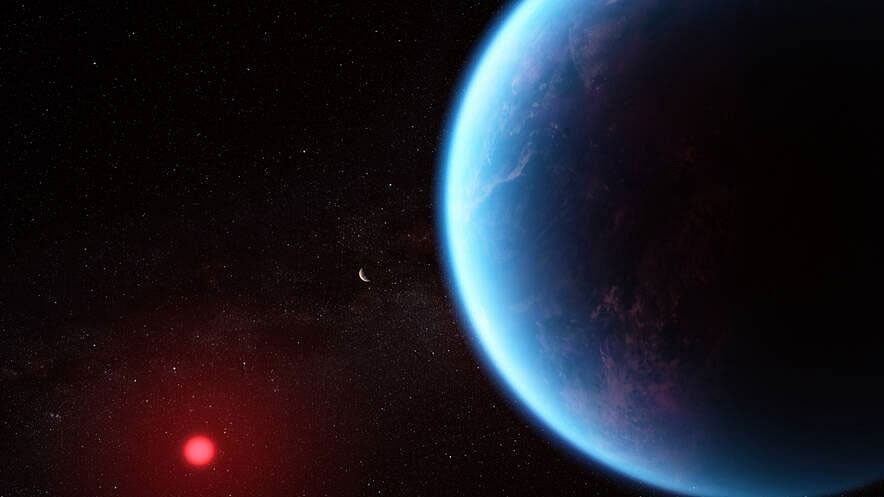
An artist's impression of exoplanet K2-18 b.
Credit: X/@NASA
NASA may have stumbled upon tentative evidence of extraterrestrial life, with the space agency's James Webb Space Telescope (JWST) detecting the presence of a molecule on a faraway planet that, on Earth at least, is only produced by living organisms.
The molecule in question, dimethyl sulfide (DMS), was detected in the atmosphere of exoplanet K2-18 b, alongside other carbon-bearing molecules such as methane and carbon dioxide, suggesting the presence of not only an ocean of water on the planet, but also the tantalising possibility of extraterrestrial life.
Located 120 light-years away (1,135,287,656,709,696 km to be exact), K2-18 b is 2.6 times the radius of Earth, orbits a cool dwarf star in the constellation of Leo, and lies in the habitable zone (or the Goldilocks Zone as it is known) of the distant system, something that makes NASA's findings all the more promising.
An image of the atmospheric composition of K2-18 b.
Credit: NASA
"The abundance of methane and carbon dioxide, and shortage of ammonia, support the hypothesis that there may be a water ocean underneath a hydrogen-rich atmosphere in K2-18 b," observed NASA.
"These initial Webb observations also provided a possible detection of a molecule called dimethyl sulfide (DMS). On Earth, this is only produced by life. The bulk of the DMS in Earth’s atmosphere is emitted from phytoplankton in marine environments," the space agency added.
A note of caution
While the possibilities opened up by the study are likely to excite the imagination, scientists are taking a cautious approach.
The study authors have already clarified that the presence of DMS detected in the atmosphere of K2-18 b requires further validation.
"Upcoming Webb observations should be able to confirm if DMS is indeed present in the atmosphere of K2-18 b at significant levels," said the study's lead author Nikku Madhusudhan, an Indian-origin astronomer at the University of Cambridge who did his B Tech from the then-Banaras Hindu University (BHU) in Varanasi.
NASA further explained that despite K2-18 b lying in the habitable zone and having carbon-bearing molecules, the planet, owing to its large size may have "a large mantle of high-pressure ice" like Neptune and may also have an ocean that is "too hot to be habitable or be liquid".
That being said, the planet's actual features and their bearing on the possibility of life remain objects of mere speculation at this point of time.
Looking forward
Given the promise of these preliminary findings, the team behind the study will now look to confirm if DMS is present in significant amounts in K2-18 b's atmosphere.
These results are expected within a year, reported BBC.
"If confirmed, it would be a huge deal and I feel a responsibility to get this right if we are making such a big claim," the publication quoted Madhusudhan as saying.